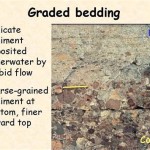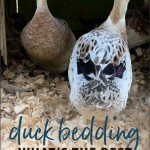What To Do With Old Straw Bedding
Straw bedding, a common choice for livestock and pet housing, offers excellent insulation and absorbency. However, after it has served its purpose, managing the accumulated used straw presents a practical challenge. Fortunately, numerous options exist for repurposing or disposing of old straw bedding, turning a potential waste product into a valuable resource.
Composting: A Natural Breakdown
Composting represents one of the most popular and environmentally friendly methods for handling old straw. The carbon-rich straw contributes significantly to a healthy compost pile, balancing the nitrogen provided by green materials like grass clippings and food scraps. The resulting compost enriches the soil, improving its structure, water retention, and nutrient content. This method effectively reduces waste and provides a valuable soil amendment for gardens, lawns, and agricultural fields.
Mulching: Suppressing Weeds and Retaining Moisture
Used straw functions effectively as a mulch in gardens and landscaping. A thick layer spread around plants suppresses weed growth, reducing competition for nutrients and water. Simultaneously, the mulch helps retain soil moisture, lessening the need for frequent watering. This benefit proves particularly advantageous in drier climates or during periods of limited rainfall. However, caution should be exercised if the previous bedding housed animals with weed seed-heavy diets, as the straw might introduce unwanted plants.
Animal Bedding (Again): Potential for Reuse
While not always recommended, under specific circumstances, old straw bedding can sometimes find a second life as bedding material. This practice requires careful consideration and management. The old bedding should be thoroughly dried and any heavily soiled sections removed. Mixing the dried straw with fresh straw can extend the usability and reduce the overall consumption of new bedding. However, this approach is best suited for less sensitive animals and should be avoided if there are concerns about disease transmission or parasite reinfestation.
Soil Amendment: Direct Incorporation
Similar to composting, old straw can be directly incorporated into the soil. This process increases soil organic matter, improving overall soil health. The decomposing straw provides nutrients and enhances the soil's structure, promoting better drainage and aeration. This approach can be especially beneficial in heavy clay soils or areas with poor drainage. It's crucial to allow sufficient time for the straw to decompose before planting to avoid nitrogen depletion in the soil as the microbes break down the carbon-rich material.
Erosion Control: Protecting Vulnerable Areas
Straw's ability to bind soil particles makes it a useful tool for erosion control. On slopes or areas prone to wind or water erosion, a layer of straw can help stabilize the soil surface, preventing loss of topsoil. This application is often seen in construction sites, along roadsides, and in areas undergoing land reclamation. The straw acts as a temporary protective barrier, allowing vegetation to establish and take over the long-term erosion control function.
Fuel Source: Biomass Energy
In some regions, old straw serves as a fuel source for biomass energy production. Specialized facilities can burn the straw to generate heat or electricity, offering a renewable energy alternative. This process reduces reliance on fossil fuels and provides a productive use for agricultural byproducts. However, the availability of such facilities and the logistics of transporting large quantities of straw influence the feasibility of this option.
Mushroom Cultivation: A Growing Medium
Used straw provides an ideal substrate for cultivating certain mushroom varieties, especially oyster mushrooms. The straw’s cellulose content serves as a food source for the growing fungi. This method offers a unique way to repurpose straw and produce a valuable food crop. Specific techniques, including sterilization and inoculation with mushroom spawn, are required for successful mushroom cultivation.
Pathways and Ground Cover: A Rustic Solution
In less formal settings, old straw can be used to create pathways or provide ground cover in animal enclosures or other outdoor areas. The straw provides a cushioning layer and helps suppress weeds, creating a more manageable and aesthetically pleasing environment. This is a relatively simple and low-cost way to utilize old bedding and reduce mud and dust.
Donation or Local Disposal: Community Options
Depending on local regulations and resources, contacting community gardens, farms, or stables may provide avenues for donating old straw bedding. These organizations may find use for the straw in their own composting, mulching, or animal care practices. Alternatively, local waste management services might offer specific guidelines for disposing of agricultural byproducts, including straw bedding. Checking with local authorities is essential to ensure compliance with regulations and responsible waste management.

Straw Bale Gardening Repurposing Wet Bales Strawbale Com

Bedding Straw The Horse S Advocate

3 Reasons To Use Hay As Bedding Instead Of Straw Family Farm Livestock

Straw For En Coop Bedding Pros Cons And How To Do It Right The Featherbrain

The Disadvantages Of Straw Bedding For Horses

Garden Myths

Straw For En Coop Bedding Pros Cons And How To Do It Right The Featherbrain

Managing Used Horse Bedding Material Eed Health Matters

Horse Bedding Straw Or Sawdust Pro Sportive

The Best En Coop Bedding Sand Vs Straw Pine Shavings Featherbrain








